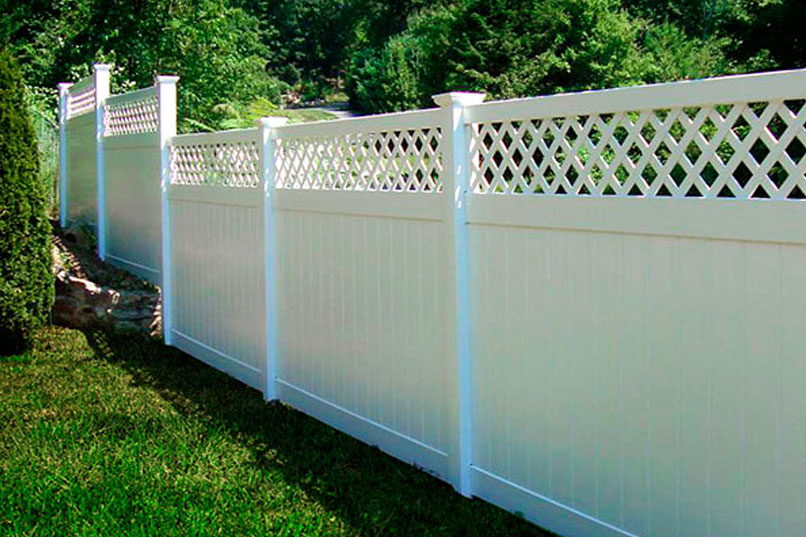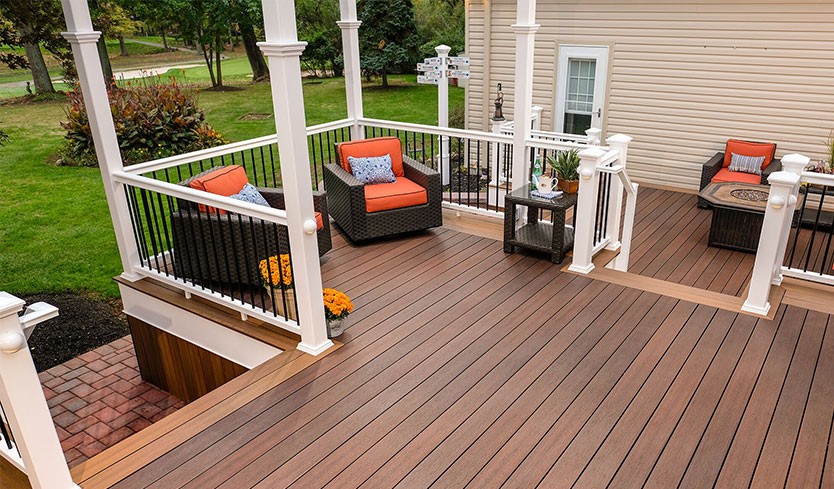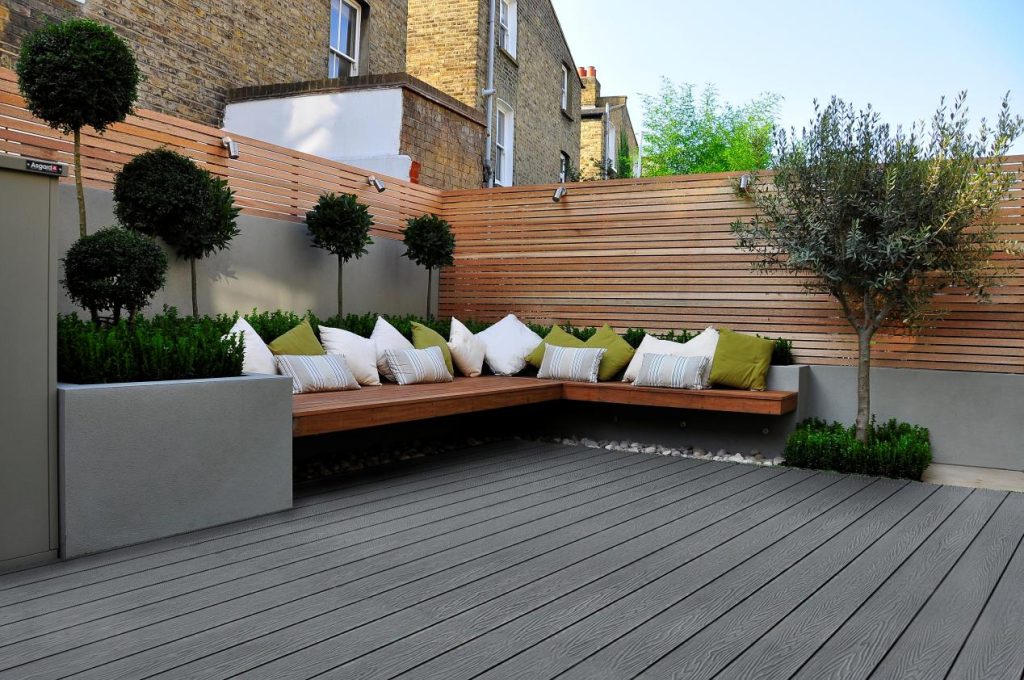Composite fencing products have become the preferred choice in modern landscaping and outdoor design, offering homeowners, contractors, and property managers an ideal balance of beauty, durability, and sustainability. Unlike traditional materials such as wood, vinyl, or metal, which each have their strengths and weaknesses, composite fencing combines the best qualities while minimizing drawbacks. With a wide variety of styles, applications, and design options, this guide explores the different types of composite fencing products, highlighting their advantages and uses to help you choose the solution that best meets your needs.
Table of Contents
What Are Composite Fencing Products?
Composite fencing products are engineered materials made by blending recycled wood fibers, plastics, and bonding agents. This unique formula produces fences that look like wood but have the low-maintenance qualities of synthetic materials. Unlike pure wood fences, composite fencing resists rot, splintering, termites, and weather damage. Compared to vinyl, it provides a more natural appearance and is usually stronger.
Because of these advantages, composite fencing products are widely used in residential backyards, commercial properties, schools, parks, and industrial facilities.
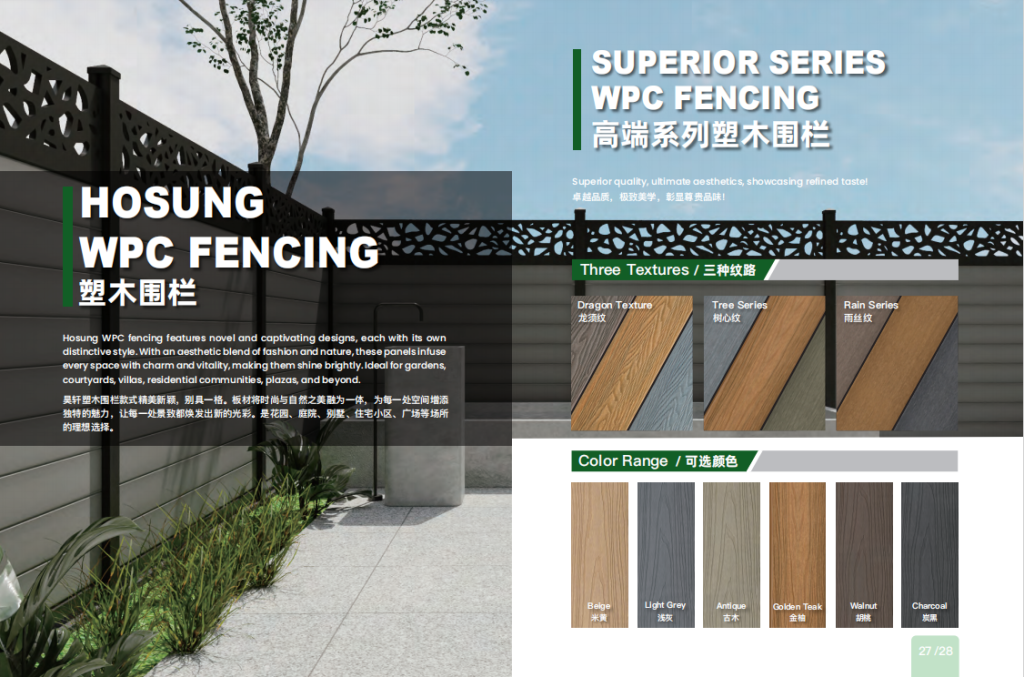
Benefits of Composite Fencing Products
Before diving into the types, it’s important to highlight the benefits of composite fencing products:
Durability – Resistant to moisture, decay, pests, and UV rays.
Low Maintenance – No painting, staining, or sealing is needed.
Eco-Friendly – Made from recycled materials, reducing landfill waste.
Aesthetic Appeal – Offers a wood-like texture with modern finishes.
Longevity – Composite fences can last 20–30 years with minimal upkeep.
Versatility – Available in multiple colors, sizes, and panel systems.
These advantages make composite fencing a long-term investment, especially for those who want lasting beauty without the hassle of traditional wood care.
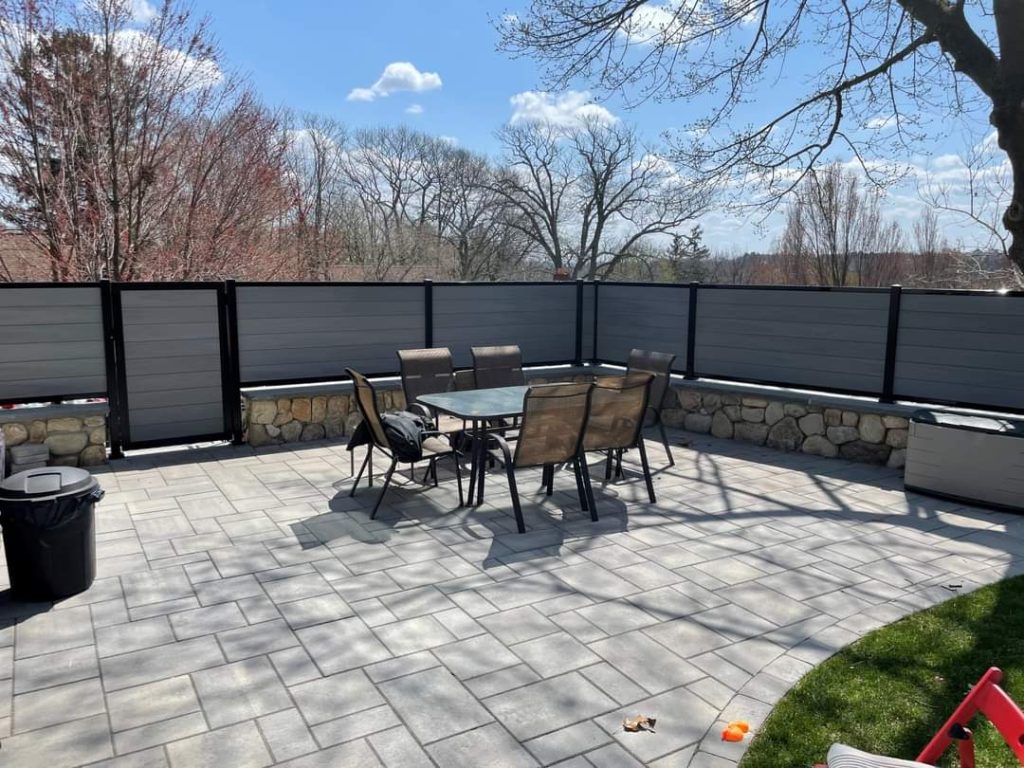
Types of Composite Fencing Products
1. Composite Privacy Fencing
Privacy fences are one of the most popular composite fencing products, designed specifically to provide complete seclusion from neighbors, streets, or nearby buildings. They create a peaceful, enclosed space that allows homeowners to enjoy outdoor living areas without interruptions.
Features:
Solid, interlocking panels without gaps that maximize privacy.
Height options usually range from 6 ft to 8 ft, making them suitable for most residential needs.
Panels are engineered to block sound while also offering full visual coverage, making them useful in busy urban neighborhoods.
Applications:
Perfect for residential backyards where families want both security and quiet outdoor leisure.
Ideal for pool enclosures, ensuring safety and maintaining a private atmosphere.
Excellent for urban properties where reducing noise and creating a calm retreat is a priority.
Advantages:
Offers a sleek, uniform appearance that enhances modern landscapes.
Requires no painting, staining, or sealing, saving time and cost.
Withstands harsh climates, heavy rains, and direct sun without warping or cracking, giving long-term value.
2. Composite Picket Fencing
Picket fences are classic in American architecture, and composite versions bring a modern, durable twist to this timeless style. They retain the nostalgic charm while eliminating the drawbacks of wood maintenance.
Features:
Narrow, evenly spaced pickets designed for visual appeal and boundary definition.
Available in traditional white or natural wood-like tones, offering more design flexibility.
Decorative top designs (flat, pointed, or scalloped) to suit different home aesthetics.
Applications:
Front yards and garden boundaries, providing curb appeal while marking property lines.
Decorative borders for landscapes, walkways, or flowerbeds.
Community or park fencing, where appearance and durability are equally important.
Advantages:
Maintains the charm and tradition of a classic picket fence while being weather-resistant.
More durable than wood pickets, which often rot, warp, or attract pests.
Perfect for homeowners wanting traditional aesthetics combined with modern performance and sustainability.
3. Composite Rail Fencing
Rail fencing, also known as split rail or ranch-style fencing, is a familiar sight in rural and suburban properties. Composite rail fencing replicates the rustic look of wood rails while eliminating maintenance issues.
Features:
Horizontal rails, usually two or three across, connected to strong vertical posts.
Open design that doesn’t block the view, making it suitable for large areas.
Can be combined with wire mesh for added security against animals.
Applications:
Farms and ranches where livestock containment and property definition are important.
Large property boundaries, offering a cost-effective and attractive solution.
Parks, trails, and open spaces that require functional yet appealing fencing.
Advantages:
Adds rustic charm while blending naturally into rural landscapes.
Strong and long-lasting, even under heavy outdoor exposure and seasonal changes.
Requires little to no upkeep, making it ideal for large properties with minimal maintenance.
4. Composite Louvered Fencing
Louvered fencing is sleek and contemporary, featuring slats positioned at angles to balance privacy and airflow. It’s perfect for homeowners looking for modern appeal.
Features:
Adjustable or fixed slats that can control light and ventilation.
Modern design that suits contemporary homes and outdoor structures.
Can be customized for semi-private or fully private layouts depending on slat angle.
Applications:
Stylish choice for modern residential projects where design is a priority.
Ideal for commercial outdoor seating areas in restaurants or cafés.
Excellent for patio or pool enclosures that require privacy with air circulation.
Advantages:
Offers a sleek, modern look that complements high-end outdoor spaces.
Provides airflow and natural light passage without compromising privacy.
Perfect for hot climates where ventilation is necessary to stay comfortable outdoors.
5. Composite Shadowbox Fencing
Shadowbox fences are semi-private fences that use alternating panels on each side of the rails, creating depth and visual interest.
Features:
Panels placed on both sides of the frame, leaving small gaps for airflow.
Unique structure that looks attractive from both sides of the fence.
Sturdy design that combines strength with partial visibility.
Applications:
Residential properties needing both privacy and ventilation.
Decorative fencing for gardens that want security without being completely closed off.
Neighborhood fences where aesthetics matter on both sides of the boundary.
Advantages:
Attractive appearance from either side of the fence, unlike traditional panels.
Offers more privacy than rail fencing while maintaining airflow.
Withstands heavy winds due to its ventilated design, reducing structural stress.
6. Composite Slat Fencing
Slat fencing is minimalist and versatile, characterized by long, evenly spaced slats that can be placed vertically or horizontally.
Features:
Narrow boards that can be spaced for semi-privacy or installed close for full privacy.
Available in multiple colors, including wood tones and modern grays.
Suitable for creating both subtle and bold architectural designs.
Applications:
Popular choice for modern homes that value clean lines and simplicity.
Rooftop or balcony fencing where a lightweight but durable solution is needed.
Commercial complexes seeking a sleek, professional appearance.
Advantages:
Sleek, urban look that fits contemporary landscapes perfectly.
Customizable design allows for unique spacing and arrangement.
Easy to clean and maintain, with no repainting or sealing required.
7. Composite Garden Fencing
Garden fencing is shorter and more decorative, perfect for landscaping and small enclosures.
Features:
Typically 2–4 ft tall, easy to handle and install.
Decorative panels with unique cutouts or traditional designs.
Lightweight but still durable enough for outdoor exposure.
Applications:
Ideal for flowerbeds, vegetable gardens, or pathway borders.
Creates stylish enclosures for pets or small animals.
Enhances curb appeal when used as part of landscape design.
Advantages:
Adds visual charm while protecting plants from damage.
Easy to install, reposition, or expand depending on garden needs.
Durable and weather-resistant, unlike flimsy wire or wooden garden fences.
8. Composite Acoustic Fencing
Acoustic fencing is designed to reduce noise, making it a functional solution for noisy environments.
Features:
Heavy-duty panels specifically engineered for sound absorption.
Taller structures than standard fences to block noise effectively.
Often reinforced with special core materials for superior acoustic performance.
Applications:
Properties near highways, railways, or airports.
Urban residential areas where sound control improves living comfort.
Commercial and industrial facilities requiring quieter surroundings.
Advantages:
Reduces unwanted noise, creating peaceful outdoor spaces.
Provides both privacy and tranquility in one solution.
Long-lasting, with minimal maintenance required even in tough conditions.
9. Composite Decorative Panels
Decorative composite fencing panels are designed for creativity and individuality.
Features:
Intricate laser-cut or patterned surfaces available in custom designs.
Lightweight but strong enough to handle outdoor environments.
Can be paired with lights or metal frames for dramatic effects.
Applications:
Perfect for patios, balconies, and rooftop fences in urban settings.
Used in hotels, restaurants, or resorts to enhance outdoor ambiance.
Stylish residential yards where uniqueness is desired.
Advantages:
Highly aesthetic and modern, offering artistic value as well as function.
Customizable patterns give property owners full design freedom.
More durable and weather-resistant compared to wooden or metal decorative panels.
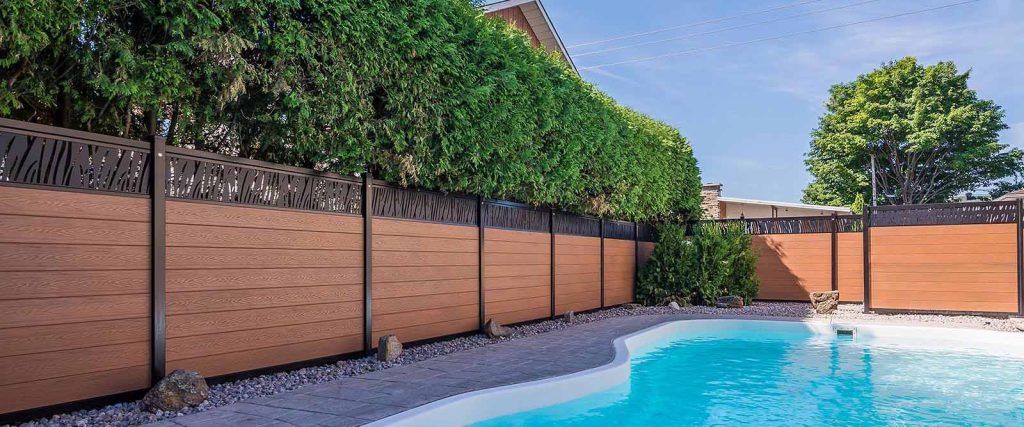
Choosing the Right Composite Fencing Product
When selecting the best type of composite fencing product, consider the following:
Purpose – Privacy, decoration, noise reduction, or boundary marking.
Style Preference – Classic, rustic, or modern.
Height & Size – Local regulations may dictate fence height.
Budget – Composite fencing can vary in cost depending on style and thickness.
Climate Conditions – Some designs allow better airflow in windy or hot regions.
By evaluating these factors, you can choose a composite fencing solution that balances function and aesthetics.
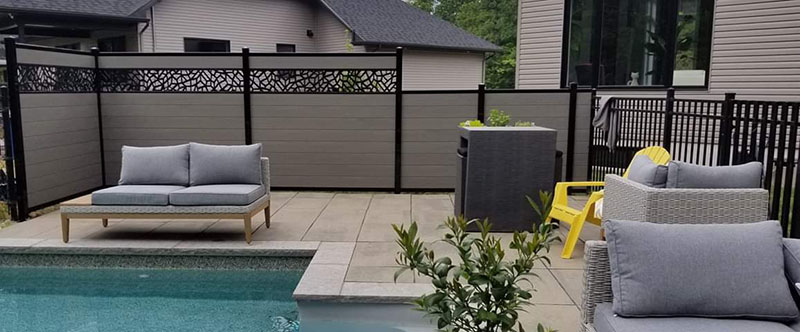
Maintenance of Composite Fencing Products
Although low-maintenance, composite fencing products still need basic care:
Cleaning: Wash with mild soap and water once or twice a year.
Inspection: Check hardware, posts, and panels for stability.
Avoid Harsh Chemicals: Do not use bleach or strong solvents.
Trimming Plants: Keep vegetation from growing directly against the fence.
These steps ensure your fence stays beautiful and strong for decades.
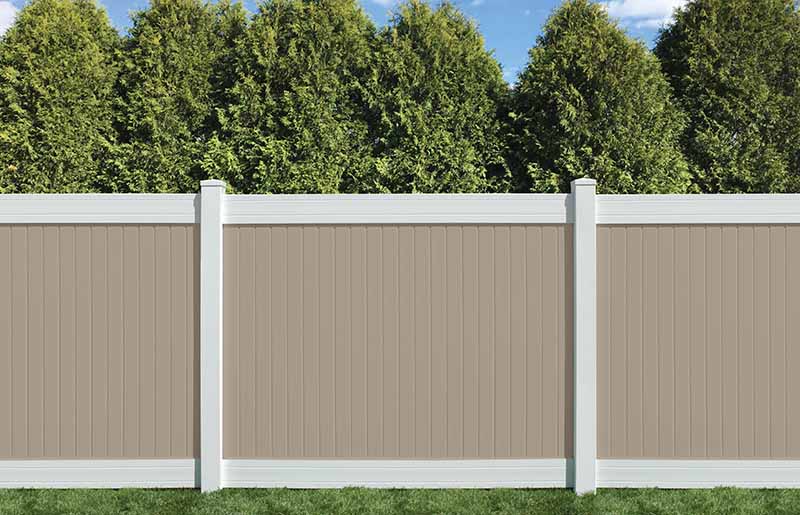
Cost of Composite Fencing Products
The price of composite fencing varies depending on type, brand, and region. On average, it ranges from $25 to $60 per linear foot installed.
Privacy Fencing: Higher end of the price range.
Rail or Garden Fencing: More affordable.
Decorative or Acoustic Fencing: Premium cost due to advanced design or performance.
Although the upfront cost is higher than wood, the lifetime value is greater due to reduced maintenance and longer lifespan.
Composite Fencing vs. Other Materials
Composite vs. Wood: Composite lasts longer, resists rot, and requires less maintenance.
Composite vs. Vinyl: Composite offers a more natural look and better strength.
Composite vs. Metal: Composite is resistant to rust and requires no repainting.
These comparisons explain why composite fencing products are increasingly favored in modern construction and landscaping.
Final Thoughts
From privacy panels to decorative garden fencing, the range of composite fencing products is extensive and versatile. Whether you want to secure your property, enhance outdoor aesthetics, or reduce noise, there is a composite fencing solution designed for your needs.
Choosing the right type depends on your goals, style preferences, and budget. With durability, eco-friendliness, and low maintenance, composite fencing products stand as a smart investment for long-term outdoor beauty and functionality.
By understanding the types of composite fencing products, you can confidently select the perfect solution to transform your property into a secure, stylish, and lasting space.
Want to get price of these composite fencing? Welcome to contact Hosung!

